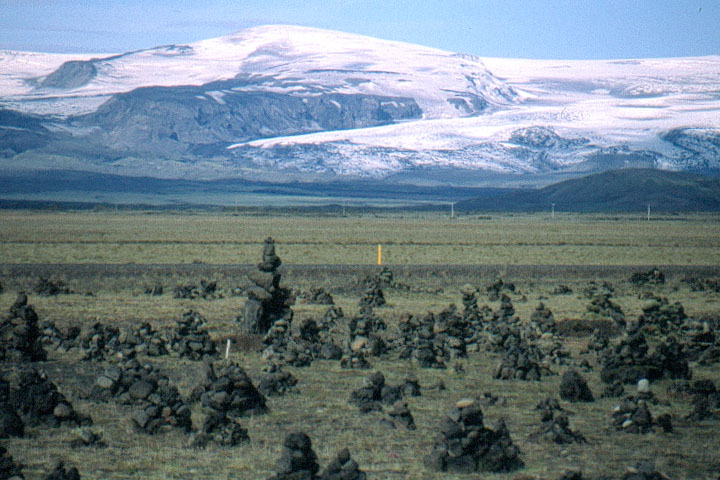The Katla volcano? That's not the one that spewed forth ash clouds last year and caused air traffic chaos across Europe is it? Nope. This one is much bigger and, if seismologists are correct, looks like to burst forth soon. Things could be much worse this time!
*Katla is derived from the word Ketill meaning "kettle".
*Katla is one of the largest volcanoes in Iceland.
*Its peak reaches 1,512 metres (4,961 ft) above sea level
*It is partially covered by the 595 km² (230 sq mi) Mýrdalsjökull glacier.
*The caldera of the volcano is 10 km (6 miles) across, and covered with 200–700 metres (660-2,300 ft) of ice.
*The volcano normally erupts every 40–80 years.
*The flood discharge at the peak of an eruption in 1755 was comparable to the combined average discharge of the Amazon, Mississippi, Nile, and Yangtze rivers.
*Last major eruption began on October 12th 1918 and lasted 24 days. This is one of the longest periods of repose between major eruptions.
*The 1918 eruption registered 5 on the VEI scale (0-8).
*Small eruptions in 1955 and 1999 didn't break through the ice coverage.
*Other major eruptions occurred in: 1860, 1823, 1755, 1721, 1660, 1625, 1612, 1580 and 934.
*The eruption of 934 released 5 cubic km of tephra and 18 cubic km of lava and was one of the largest lava eruptions in the past 10,000 years.
*Signs of unrest since 1999 and increased earthquake activity in recent months.
*After the Eyjafjallajökull eruptions of 2010, Ólafur Grímsson, President of Iceland, said "the time for Katla to erupt is coming close ... we have prepared ... it is high time for European governments and airline authorities all over Europe and the world to start planning for the eventual Katla eruption".


No comments:
Post a Comment